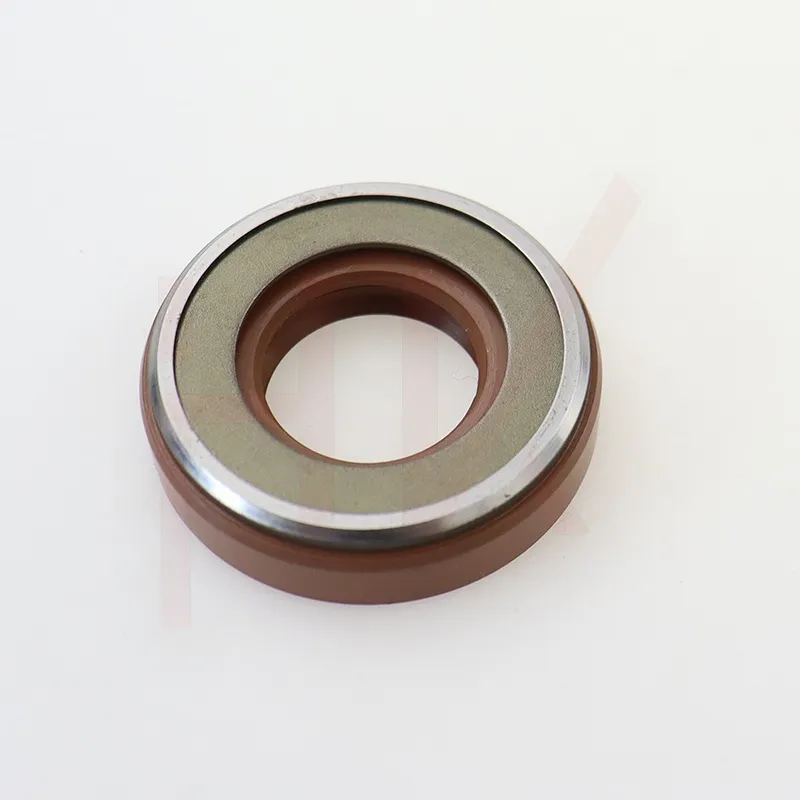डिस . 21, 2024 10:10 Back to list
14x24x6 oil seal
Understanding the 14x24x6 Oil Seal A Comprehensive Guide
Oil seals play a crucial role in various mechanical systems, ensuring optimal functioning and longevity by preventing the leakage of lubricants and entry of contaminants. Among the diverse range of oil seals available in the market, the 14x24x6 oil seal is a noteworthy component, often utilized in different automotive and industrial applications.
What is an Oil Seal?
An oil seal, sometimes referred to as a rotary shaft seal, is specifically designed to contain lubricants within machinery. These seals are essential for the proper functioning of rotating shafts, as they minimize the risk of oil spills, which can cause damage to surrounding components and compromise system performance. The primary function of an oil seal is to create a barrier that prevents lubricant from escaping while simultaneously keeping harmful particles at bay.
Specifications of the 14x24x6 Oil Seal
The designation 14x24x6 denotes the dimensions of the oil seal 14 mm for the inner diameter, 24 mm for the outer diameter, and a width of 6 mm. Understanding these specifications is vital for selecting the right oil seal for a specific application. The compatibility with the shaft and housing dimensions is critical, as improper sizing can result in seal failure, leading to leaks and costly repairs.
The material composition of the 14x24x6 oil seal typically features elastomers like nitrile rubber (NBR) or fluorocarbon elastomer (FKM). Nitrile rubber is commonly used due to its excellent properties, such as resistance to wear, tearing, and various oils. On the other hand, FKM offers superior resistance to high temperatures and aggressive chemicals, making it suitable for specialized applications.
Applications of the 14x24x6 Oil Seal
The versatility of the 14x24x6 oil seal renders it suitable for various applications
. It is frequently used in automotive applications, including engine components, transmissions, and differential gear systems. By preventing oil leaks in these critical systems, the seal ensures that the machinery operates smoothly and efficiently.Apart from vehicles, the 14x24x6 oil seal finds uses in industrial machinery, such as pumps, compressors, and hydraulic systems. In these settings, effective sealing is crucial for maintaining system pressure and protecting vital mechanisms from contaminants.
14x24x6 oil seal

Signs of Wear or Failure
Like all mechanical components, oil seals can experience wear and tear over time. Signs of a failing 14x24x6 oil seal may include visible oil leaks around the shaft or housing, increased noise during operation, or a decrease in lubrication levels. Regular inspection and timely replacement of worn seals are essential to prevent extensive damage to the machinery.
Installation Tips
Proper installation of the 14x24x6 oil seal is crucial for its effectiveness. Here are some tips to ensure a successful installation
1. Clean the Installation Area Before placing the oil seal, clean the shaft and housing thoroughly to remove any debris or old sealant. 2. Lubricate the Seal Apply a thin layer of lubricant to the sealing lip of the oil seal. This helps the seal glide into position without damage.
3. Use the Right Tool Employ a seal driver or appropriate tool to ensure even pressure when installing the seal, avoiding distortion.
4. Check Alignment Ensure that the seal is properly aligned with the shaft to prevent premature wear.
Conclusion
The 14x24x6 oil seal is an essential component in various machines, playing a key role in ensuring efficiency and longevity. Understanding its specifications, applications, and maintenance needs can help users select the right oil seal for their machine. Regular inspection and proper installation are paramount in extending the life of the oil seal and the machinery it protects. As technology and applications evolve, the significance of quality oil seals like the 14x24x6 will continue to grow, highlighting their indispensable role in mechanical reliability and performance.
-
The Trans-formative Journey of Wheel Hub Oil Seals
NewsJun.06,2025
-
Graphene-Enhanced Oil Seals: Revolutionizing High-Pressure Oil Sealing
NewsJun.06,2025
-
Future of Hydraulic Sealing: Advanced Intelligent TCN Oil Seals
NewsJun.06,2025
-
Don’t Let a Broken TCV Oil Seal Ruin Your Day
NewsJun.06,2025
-
Bio-Inspired Dust Seals for Better Sealing Performance
NewsJun.06,2025
-
Biodegradable and Sustainable Hydraulic Seal Materials
NewsJun.06,2025
-
Top Oil Seal Solutions for Your Industrial Needs
NewsMay.22,2025
Products categories
















